Champagne, according to Moët Hennessy ambassador Lucy Warren’s declaration at a recent Whisky Exchange tasting, is ‘wine that’s supposed to make you happy’. Funny, then, that it was also known as ‘the wine of the devil’, after Dom Pérignon discovered, time and time again, that 70% of his stock had exploded in the cellars. (As with all stories about the infamous DP, however, take that avec un petit pinch of salt…)
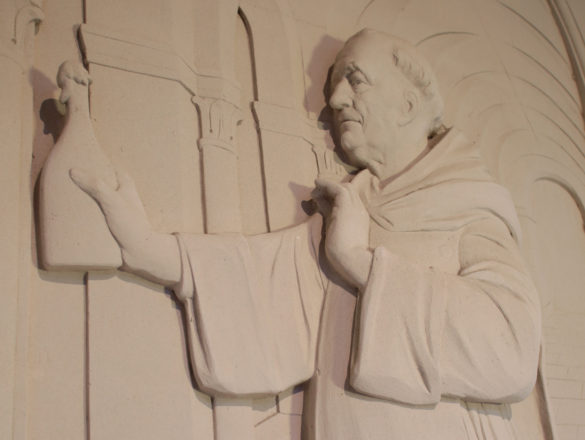
‘Zut alors! It’s going to explode!’ – Dom Pérignon
The notion of Champagne bringing happiness is certainly one many of us buy into around Valentine’s Day, normally while frantically combing the supermarket for the last decent bottle during our lunchbreak on the 14th.
But if any bottle can elicit at least a faint smile worthy of the Mona Lisa, then here at The Whisky Exchange we’d argue that vintage Champagne should elicit a reaction akin to the Cheshire Cat on a trawler full of tuna. Here’s why you need vintage Champagne – not just for Valentine’s Day, but for life.
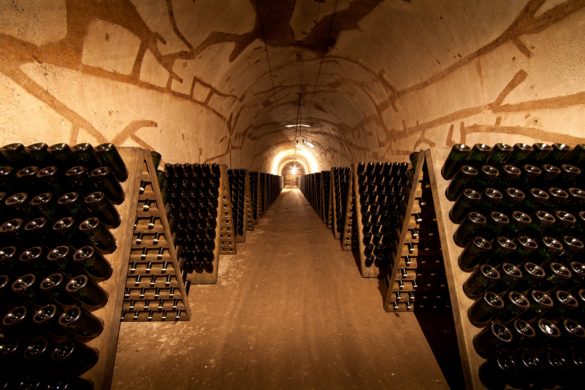
Bottles of Pol Roger quietly maturing
What is vintage Champagne?
Between 80% – 90% of all Champagne is Non Vintage (NV) – bubbly created from a blend of wines from different years. When making an NV, the goal of the Champagne house is to produce a consistent wine with a recognisable character, a bit like the house’s fingerprint. To achieve this, the house blends the young wine with ‘reserve wine’ before it undergoes secondary fermentation (the process that creates the fizz). Reserve wine is wine from previous years, and the amount of it included in a blend is a good indicator of a Champagne’s quality. The oldest reserve wines in Champagne are owned by Veuve Clicquot and date to 1988.
Vintage, on the other hand, is made exclusively with the produce of a single harvest. That doesn’t mean, however, that they’re made every year: traditionally, vintage Champagnes are only made years when the harvest is of outstanding quality.
Given the vagaries of the weather conditions, for one, it’s not surprising that vintage Champagnes have been infrequent in previous years: there was, for example, one decade when Dom Pérignon produced just one. Now, however, improvements in technology which allow for greater efficiency mean that the number of vintages produced this side of the millennium has risen dramatically.
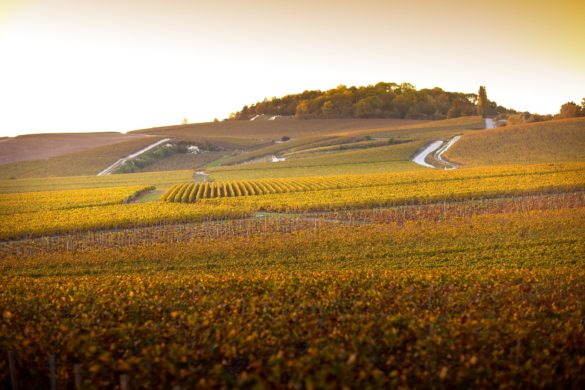
A vineyard in Champagne – located north-east of Paris
Vintage Champagnes have been made since the early 1800s, with the irrepressible Madame Clicquot leading the way (her 1811 vintage is known as ‘the comet vintage’ thanks to a comet which passed overhead and was said to have influenced the harvest). Some houses, like Dom Pérignon, only make vintage Champagne, but it’s more common for producers to create both styles.
Why should you be drinking vintage Champagne?
Vintage Champagne is not only made with the best possible grapes, but it also spends a lot more time on the lees (the leftover bits of yeast from secondary fermentation) than NV. Typically, it’s aged for at least four years, giving it much more complex and creamy flavours. But don’t listen to me: here’s what our resident Master of Wine, Dawn Davies, has to say:
‘In vintage Champagne, you’re getting something expressive of a certain time, that will never be recreated again. It’s unique to that year and that makes it special.
‘Vintages tend to age for longer; depending on the brand that could be 20, 30, even 60 years. I’ve tasted Dom Pérignon from the 1960s that was still beautiful and amazing. A lot of us drink vintage too young: if you you look at the 2006 bottles, we might be drinking them now, but in reality you’d want to wait 10 years. The counterpoint to this is if you buy them young they tend to increase in value, and in complexity.
‘If you want to get started in vintage Champagne, start with something you don’t have to spend a huge amount on, something that’s from a good house and is good value. Try the 2009 Larmandier-Bernier Terre De Vertus – it’s got a bit of age to it and is hugely enjoyable.
‘Learning about vintage is all about asking the right questions, knowing what style you like, knowing the producers, trying new things – small growers, for example, are always great value. Pol Roger is always great value on vintage, too.
‘If you’re familiar with a Champagne house, try the next bottle up in their range and ideally try it side by side with the NV to see the differences, as well as how the house style comes across in each glass.
‘To help you choose your vintage bottles, look at wine sites like wine-searcher.com, like jancisrobinson.com, these will tell you which are good, when to drink them, which to keep. There are so many tools on the web, books and resources to help you learn, and you will reap the rewards.
‘One of my best memories is sitting in Champagne on a hill overlooking the Vallee de Marné, drinking Billecart-Salmon Rosé Cuvée Elisabeth Salmon 1988. Magical. If you have a really good vintage, there’s nothing better.’
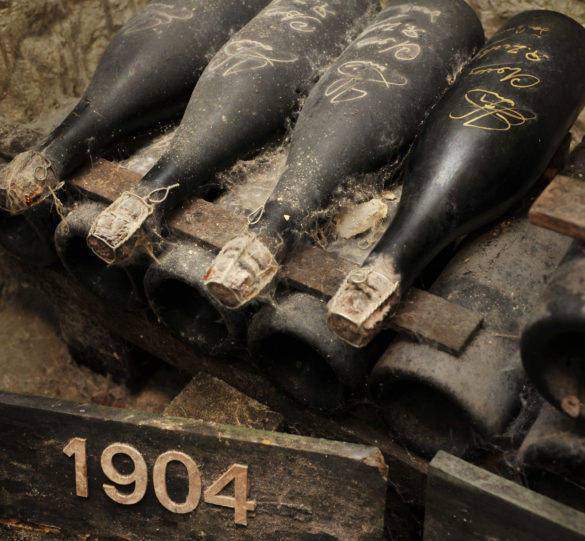
Dom Pérignon has huge stocks of vintage Champagne, some of which has been aged for more than 100 years
Tagged Billecart-Salmon, champagne, Dom Perignon, Larmandier-Bernier, Pol Roger, Veuve Clicquot, vintage champagne


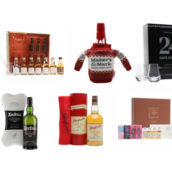


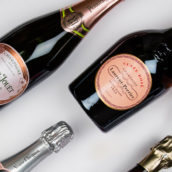




 Enjoy responsibly
Enjoy responsibly
Comments
My wife and I love champagne on a special occasion. Depending on price I may have to surprise her with a vintage bottle if I can find one.
Lovely! If you get time, please let us know what you try and what you both think.
[…] We’ve done beginner’s guides to absinthe, vermouth, the world of aromatised wines, vintage Champagne, infinity bottles and even competitive picnicking. Newest addition to the team, Tom, survived his […]